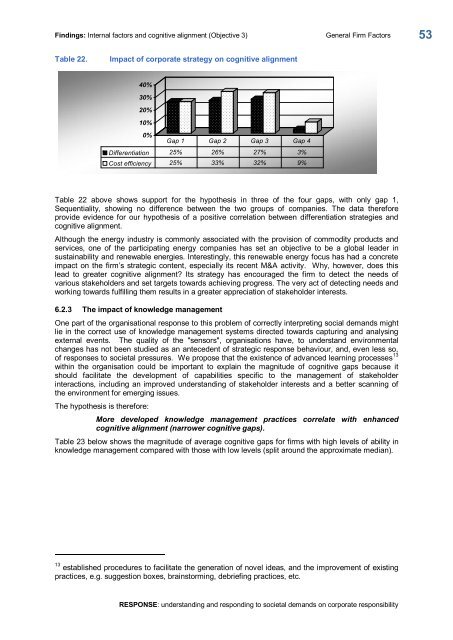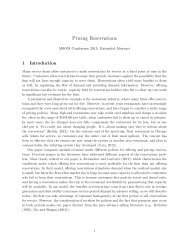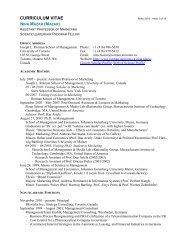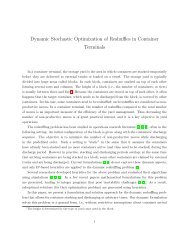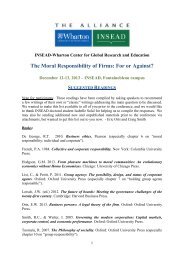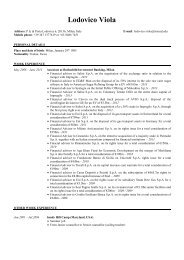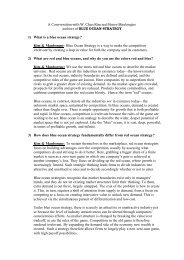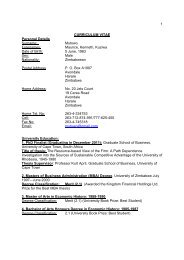RESPONSE - Insead
RESPONSE - Insead
RESPONSE - Insead
Create successful ePaper yourself
Turn your PDF publications into a flip-book with our unique Google optimized e-Paper software.
Findings: Internal factors and cognitive alignment (Objective 3) General Firm Factors<br />
Table 22. Impact of corporate strategy on cognitive alignment<br />
40%<br />
30%<br />
20%<br />
10%<br />
0%<br />
Gap 1 Gap 2 Gap 3 Gap 4<br />
Differentiation 25% 26% 27% 3%<br />
Cost efficiency 25% 33% 32% 9%<br />
Table 22 above shows support for the hypothesis in three of the four gaps, with only gap 1,<br />
Sequentiality, showing no difference between the two groups of companies. The data therefore<br />
provide evidence for our hypothesis of a positive correlation between differentiation strategies and<br />
cognitive alignment.<br />
Although the energy industry is commonly associated with the provision of commodity products and<br />
services, one of the participating energy companies has set an objective to be a global leader in<br />
sustainability and renewable energies. Interestingly, this renewable energy focus has had a concrete<br />
impact on the firm’s strategic content, especially its recent M&A activity. Why, however, does this<br />
lead to greater cognitive alignment? Its strategy has encouraged the firm to detect the needs of<br />
various stakeholders and set targets towards achieving progress. The very act of detecting needs and<br />
working towards fulfilling them results in a greater appreciation of stakeholder interests.<br />
6.2.3 The impact of knowledge management<br />
One part of the organisational response to this problem of correctly interpreting social demands might<br />
lie in the correct use of knowledge management systems directed towards capturing and analysing<br />
external events. The quality of the "sensors", organisations have, to understand environmental<br />
changes has not been studied as an antecedent of strategic response behaviour, and, even less so,<br />
of responses to societal pressures. We propose that the existence of advanced learning processes 13<br />
within the organisation could be important to explain the magnitude of cognitive gaps because it<br />
should facilitate the development of capabilities specific to the management of stakeholder<br />
interactions, including an improved understanding of stakeholder interests and a better scanning of<br />
the environment for emerging issues.<br />
The hypothesis is therefore:<br />
More developed knowledge management practices correlate with enhanced<br />
cognitive alignment (narrower cognitive gaps).<br />
Table 23 below shows the magnitude of average cognitive gaps for firms with high levels of ability in<br />
knowledge management compared with those with low levels (split around the approximate median).<br />
13 established procedures to facilitate the generation of novel ideas, and the improvement of existing<br />
practices, e.g. suggestion boxes, brainstorming, debriefing practices, etc.<br />
<strong>RESPONSE</strong>: understanding and responding to societal demands on corporate responsibility<br />
53


